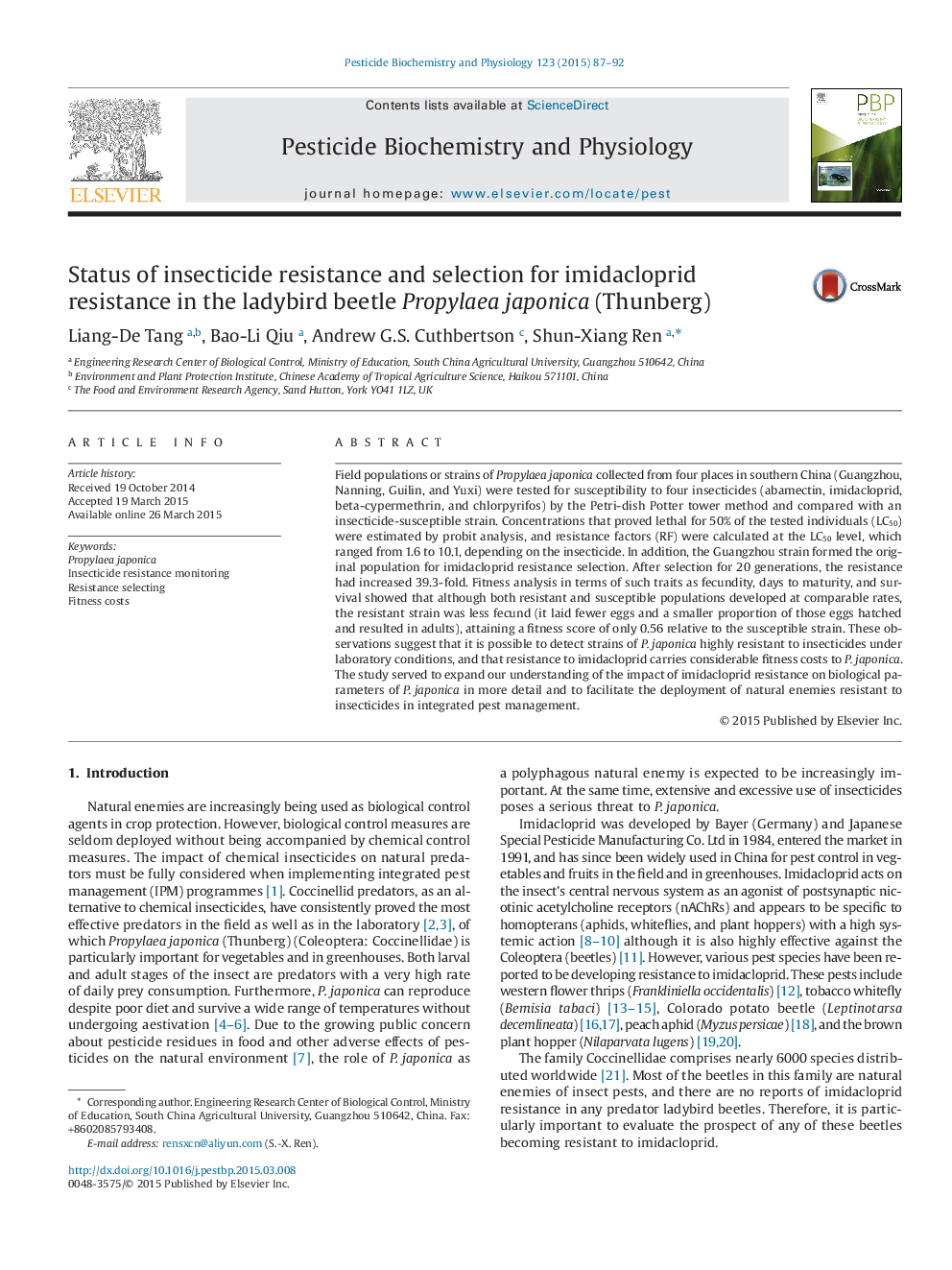| کد مقاله | کد نشریه | سال انتشار | مقاله انگلیسی | نسخه تمام متن |
|---|---|---|---|---|
| 2009121 | 1541776 | 2015 | 6 صفحه PDF | دانلود رایگان |

• The resistance of four field strains of Propylaea japonica to different insecticides was monitored.
• A 39.3-fold resistance against imidacloprid was observed after selection for 20 generations in the laboratory.
• The resistant P. japonica had a relative fitness of only 0.56 when compared to susceptible strain.
Field populations or strains of Propylaea japonica collected from four places in southern China (Guangzhou, Nanning, Guilin, and Yuxi) were tested for susceptibility to four insecticides (abamectin, imidacloprid, beta-cypermethrin, and chlorpyrifos) by the Petri-dish Potter tower method and compared with an insecticide-susceptible strain. Concentrations that proved lethal for 50% of the tested individuals (LC50) were estimated by probit analysis, and resistance factors (RF) were calculated at the LC50 level, which ranged from 1.6 to 10.1, depending on the insecticide. In addition, the Guangzhou strain formed the original population for imidacloprid resistance selection. After selection for 20 generations, the resistance had increased 39.3-fold. Fitness analysis in terms of such traits as fecundity, days to maturity, and survival showed that although both resistant and susceptible populations developed at comparable rates, the resistant strain was less fecund (it laid fewer eggs and a smaller proportion of those eggs hatched and resulted in adults), attaining a fitness score of only 0.56 relative to the susceptible strain. These observations suggest that it is possible to detect strains of P. japonica highly resistant to insecticides under laboratory conditions, and that resistance to imidacloprid carries considerable fitness costs to P. japonica. The study served to expand our understanding of the impact of imidacloprid resistance on biological parameters of P. japonica in more detail and to facilitate the deployment of natural enemies resistant to insecticides in integrated pest management.
Graphical AbstractFigure optionsDownload as PowerPoint slide
Journal: Pesticide Biochemistry and Physiology - Volume 123, September 2015, Pages 87–92